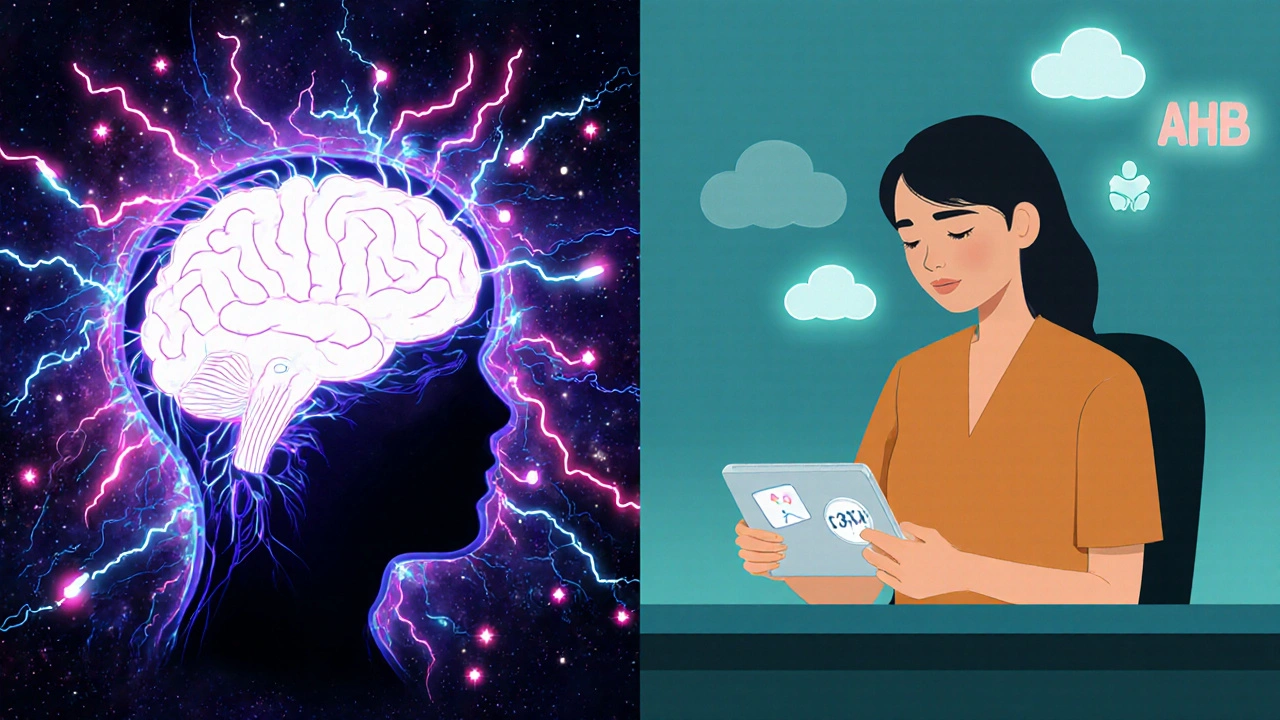Ever wonder why a child diagnosed with autism often shows signs of other behavior challenges? The short answer is that autism and many behavior disorders share underlying brain pathways, making co‑occurrence common. This article breaks down what that relationship looks like, why it matters, and how families and professionals can tackle it head‑on.
TL;DR
- Autism frequently co‑exists with ADHD, anxiety, ODD, and conduct disorder.
- Shared neurobiology and sensory overload drive the overlap.
- Accurate assessment needs tools that screen for multiple conditions.
- Treatment blends behavioral therapy, tailored education, and, when needed, medication.
What Is Autism?
A neurodevelopmental condition marked by differences in social communication, repetitive interests, and sensory processing. People on the spectrum experience the world in unique ways-some thrive on routine, others become overwhelmed by loud noises. Roughly 1 in 36 children in the U.S. receive an autism diagnosis, according to the latest CDC figures.
Defining Behavior disorders
A group of mental health conditions that manifest as persistent patterns of disruptive, aggressive, or impulsive behaviors. These disorders often emerge during childhood and can impair school performance, relationships, and overall well‑being.
Why Do Autism and Behavior Disorders Frequently Overlap?
Scientists point to three main reasons:
- Shared neurobiology: Brain regions that regulate attention, impulse control, and emotional regulation-like the prefrontal cortex and basal ganglia-show atypical activity in both autism and ADHD.
- Sensory overload: Children with autism often react strongly to sensory input. When a classroom feels too noisy, they may act out, mimicking symptoms of oppositional defiant disorder (ODD) or conduct disorder.
- Diagnostic masking: Some autistic traits, such as difficulty with eye contact, can be misunderstood as defiant behavior, leading clinicians to assign an additional label.
Common Co‑occurring Conditions
Below are the most frequently reported behavior disorders that show up alongside autism:
- ADHD - Hyperactivity, inattention, and impulsivity.
- Anxiety disorder - Excessive worry, social anxiety, and panic attacks.
- Oppositional Defiant Disorder (ODD) - Frequent temper loss, argumentativeness, and refusal to comply.
- Conduct disorder - Aggressive or destructive behaviors that violate social norms.

How Overlap Affects Assessment
When a child presents with both autistic traits and disruptive behaviors, a single‑tool screening can miss the bigger picture. Best practice includes:
- Using a comprehensive developmental questionnaire (e.g., the ADOS‑2) alongside behavior rating scales like the Conners‑3.
- Observing the child in multiple settings-home, school, therapy-to differentiate context‑specific triggers.
- Collaborating with a multidisciplinary team: pediatrician, psychologist, speech‑language pathologist, and occupational therapist.
Effective Management Strategies
Because the challenges are multi‑layered, solutions blend several approaches:
- Behavioral interventions: Applied Behavior Analysis (ABA) teaches functional skills while reducing problematic behaviors through reinforcement.
- Sensory accommodations: Noise‑cancelling headphones, designated quiet zones, and visual schedules help lower sensory stress that can trigger outbursts.
- Social‑emotional teaching: Structured peer‑mediated programs foster coping skills for anxiety and improve interaction.
- Medication when needed: Stimulants can alleviate ADHD symptoms, while selective serotonin reuptake inhibitors (SSRIs) may reduce severe anxiety. Medication should always complement, not replace, therapy.
Quick Comparison of Autism and Common Co‑occurring Disorders
| Disorder | Core Features | Typical Age of Onset | Common Co‑occurring Behaviors |
|---|---|---|---|
| Autism | Social communication differences, repetitive interests, sensory sensitivities | Before 3 years | ADHD symptoms, anxiety, ODD |
| ADHD | Inattention, hyperactivity, impulsivity | Early school age | Difficulty with routines, social rejection, anxiety |
| ODD | Arguing, defiance, vindictiveness | Preschool | Conduct issues, mood swings, frustration with sensory overload |
| Conduct disorder | Aggressive, deceitful, rule‑breaking behavior | Late childhood | High risk of substance use, legal problems, co‑existing anxiety |
| Anxiety disorder | Excessive worry, avoidance, physical tension | Varies, often early school age | Social withdrawal, sensory avoidance, meltdowns |
Real‑World Example
Take Sam, a 7‑year‑old diagnosed with autism at age 3. In school, he excels at math but frequently disrupts class by shouting when the fire alarm drills start. After a comprehensive evaluation, clinicians found he also meets criteria for ADHD and a mild anxiety disorder. By integrating a sensory‑friendly classroom, a low‑dose stimulant, and weekly ABA sessions, Sam’s outbursts dropped by 60% and his teachers reported better focus.
Key Takeaways
Understanding that autism rarely exists in isolation is the first step toward effective support. Look for patterns of impulsivity, anxiety, or oppositional behavior, and use a layered assessment process. Combine behavioral therapy, sensory accommodations, and, when appropriate, medication to address the whole child-not just one label.

Frequently Asked Questions
Can a child be diagnosed with both autism and ADHD?
Yes. Studies show that up to 50% of children with autism also meet criteria for ADHD. The overlapping symptoms-like difficulty sustaining attention-can make diagnosis tricky, so clinicians often use separate rating scales for each condition.
Does having autism increase the risk of developing anxiety?
Absolutely. Sensory overload, social misunderstanding, and unpredictable routines can spark chronic worry. About 40% of autistic adolescents report clinically significant anxiety.
When should medication be considered for co‑occurring behavior disorders?
Medication is typically a second‑line option after behavioral strategies. If disruptive symptoms (e.g., severe hyperactivity or aggression) prevent learning or safety, a psychiatrist may prescribe stimulants for ADHD or SSRIs for anxiety, always alongside therapy.
How does ABA help with both autism and behavior challenges?
ABA uses positive reinforcement to teach functional skills and replace problematic behaviors. By breaking tasks into small steps, it addresses the rigidity of autism while also curbing impulsivity seen in ADHD or ODD.
What school accommodations work best for kids with autism and behavior disorders?
Visual schedules, frequent sensory breaks, preferential seating, and a calm‑down corner are proven to reduce outbursts. Pair these with a 504 plan that includes behavioral goals and regular progress checks.
By recognizing the nuanced relationship between autism and behavior disorders, parents, educators, and clinicians can create a supportive roadmap that targets the whole child, not just isolated symptoms.

Amy Martinez
September 28, 2025 AT 04:51